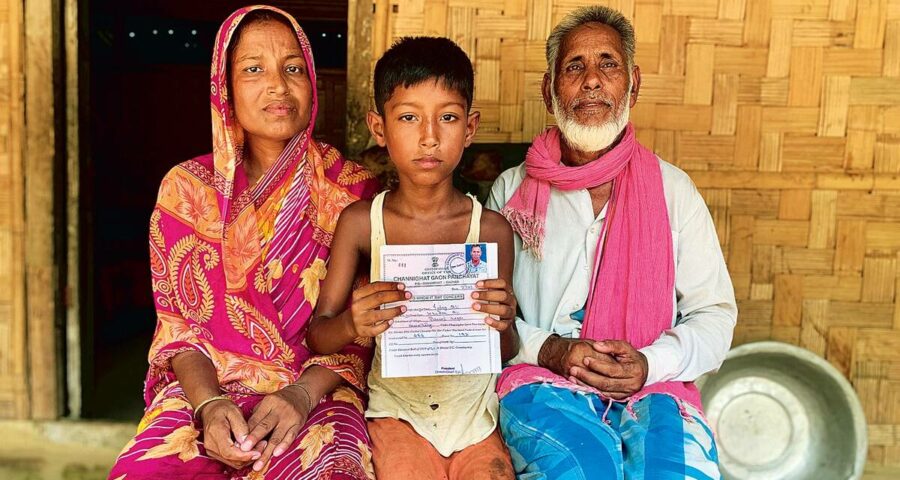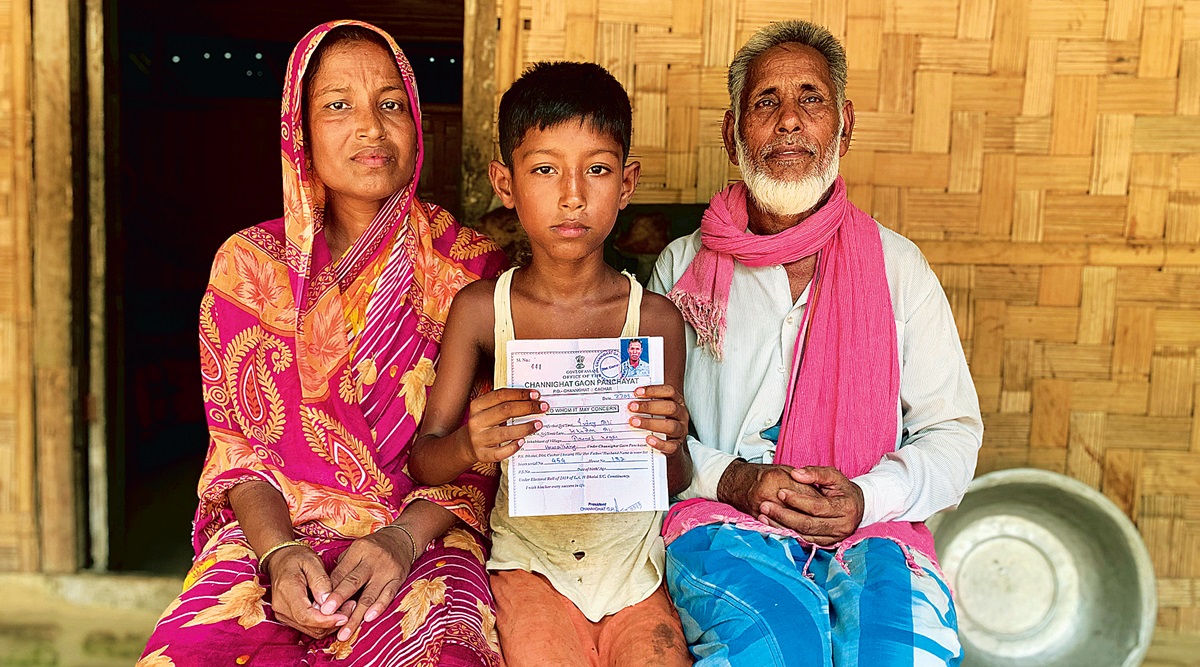Born in history, complicated by geography, Assam-Mizo border scraps are not new. But people fear something changed forever on July 26.
Over the last week, as cavalcades of cars — with TV crews, politicians, security forces — have descended on the border town of Lailapur in Assam, Khudar Ali has looked on quietly.
The border with Mizoram, an expanse of forested slopes that begins roughly a kilometre from his home, has been a flashpoint as far as the 68-year-old, a daily wager, can remember. But July 26 felt especially disturbing. It wasn’t just that six policemen died, and scores were injured, in what was possibly the bloodiest standoff between Assam and Mizoram — or that both sides have hardened their positions since. For Ali, it brought back memories of barely a year ago, when a similar “maati ka tension (tension over land)” had led to the death of his son Intaz.
The 165-km Assam-Mizoram boundary cuts across forest hills in three districts on either side (Cachar, Karimganj and Hailakandi in Assam, and Mamit, Kolasib and Aizawl in Mizoram). In October 2020 too, the flashpoint began like several earlier ones. Assam alleged that Mizoram residents had built temporary huts on its land; Mizoram said the stretch was always its territory. Residents clashed, houses were burnt, schools bombed, croplands destroyed, and Intaz, a woodcutter, was killed.
“He went missing after he went to the forest. Three days later, we were handed his body (by the Mizos). They say he dealt in drugs and had died while fleeing police,” says Ali. Mizoram officials say Intaz was held by a local NGO after he crossed over to deliver a consignment. Ali believes his son was abducted, tortured and killed, as a result of the tension between the two states.
The Assam government gave the family
Rs 5 lakh as compensation and a promise to probe the incident at the “highest levels”. But 10 months later, Ali knows no better.
“I can share the pain the families of the policemen (who died) are feeling. It’s bad enough it happened once, how can it happen again? Why can’t a boundary be made once and for all?” says Ali, tears streaming down his face.
This time tensions flared up a few weeks ago, when the Assam Police destroyed a stretch of plantations of Mizoram residents in a forest area that Assam claims as part of Hailakandi. Then, Assam accused Mizoram of not just building a road but even a police post on its side of the territory. On July 26, an Assam Police team went over to “discuss” the matter.
Around afternoon, recalls Abdul Ali Laskar, a truck driver, loudspeakers in Lailapur rang out with announcements for villagers to gather at the border as a “show of strength”. No one knows who made the announcements, says Laskar, but he went anyway, to assert “our claim” on the land.
Around the same time, a rumour swept through Mizoram’s Vairengte village. Isack Z says they heard that Assam Police had come with 200 men, overrun the CRPF team at the border and marched into Mizoram. “We got angry. How can they just enter like this?… So we went to the border,” Isack Z says.
Mahibul Hussain, a local businessman, pinpoints why July 26 was different. During the October 2020 incident, he says, he and a few others had declared an economic blockade on their own, stopping trucks from crossing to Mizoram, to force the Mizos to step back from “encroached” land. “The Centre intervened and we had to lift the blockade. The Mizos took advantage of that,” Hussain says.
This time, he adds, the civilians had little to do with what happened. “The battle is at a much higher level, between governments… police vs police, state vs state.”
Many in Lailapur now think it’s not their fight to fight anymore. “We did what we had to… now it’s up to them (the government),” says Ajmal Hussain, a 25-year-old resident of Lailapur, adding that the morale is low after July 26. “While it was heartening to see our Chief Minister take action… after that day, our hopes have fallen. People have died, and we have lost land too,” he says.
The border dispute here also has another dimension: the age-old insider-versus-outsider faultline of the Northeast.
Lailapur’s population is mostly Bengali Muslim, and one narrative in Mizoram is that they are “illegal settlers” from Bangladesh. Mizo Students’ Union president Lalmuanzuala wrote an open letter to Assam Chief Minister Himanta Biswa Sarma last week accusing him of appeasing the “many illegal immigrants from Bangladesh” residing in the forest area — never mind that the ruling BJP’s main plank is rooting out such immigrants through the National Register of Citizens.
“They (the illegal immigrants) are the ones we have a problem with, not all Assamese people,” says a resident of Vairengte, not wishing to be named as he is a Central government employee. “With our own eyes, we have seen the population increase. There is no explanation but that Assam protects them for votes… We have been good to them (the Lailapur residents), we even feed them when they come here. But slowly, it is getting out of hand.”
Painfully aware of how such claims can take wing, Lailapur residents call the talk “Mizo propaganda”. “We have documents since colonial times… And even if we were migrants, it is the business of the Assam government, not the Mizos,” says Shajuddin, a carpenter.
Shajuddin adds that he has often faced Mizo “dadagiri”. “When the Mizo side issues a permit, they ask us for the NRC legacy data, or this document or that.”
The other new factor in the mix is what the Mizos see as Assam’s new aggression, under CM Sarma. Says Zion Lalremruata, a farmer leader from Vairengte, “Talks were on at the chief minister level… Union Home Minister Amit Shah met them recently. Yet, Assam came into our land and disturbed the status quo… They are clearly working on political orders.”
A journalist from Vairengte says, “Earlier Assam Police would come with one vehicle, the talks would be at the officer-in- charge level… Now they bring machines and tractors, and harass the local people.”
When times are good, people from the two sides cross over daily for work. A free-zone market at Vairengte on Thursday is a major draw for people in Lailapur. Sangluaia believes they can return to that. “Assam is the bigger state. It should have the bigger heart,” he says.
Source: Read Full Article


